Considerable energy can be saved by using automation systems
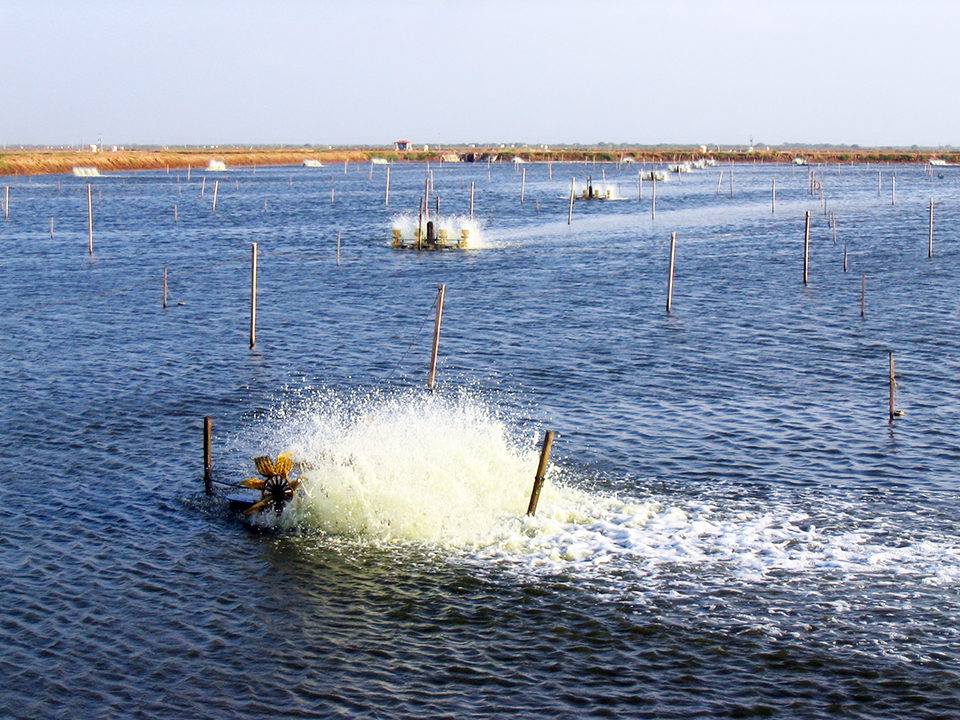
Pond aquaculture is becoming increasingly intensive, and as a result, more feed is used, and mechanical aeration is a common practice. There are many types of pond aeration systems, but most operate on one of two principles.
With “splasher” aerators, water is splashed into the air to increase the area of contact between air and water for diffusion of oxygen from air into the water. Alternatively, air bubbles can be released into the water from diffusers placed near the bottoms of ponds. With these “bubbler” aerators, small bubbles rise through the water column, creating a large surface area for diffusion of oxygen from the air inside the bubbles into the water. There have also been efforts to develop pure oxygen contact systems for pond use, but satisfactory devices are not yet available.
Aerator types
The common splasher aerator types are vertical pumps (turbine aerators) and paddlewheel aerators. Propeller-aspirator-pump aerators rely on the venturi principle to introduce air bubbles into the water. Diffused-air aeration systems consist of an air blower connected by tubes to a network of diffusers on the pond bottom for discharging fine bubbles of air into the water. All of these types of aerators have been used successfully in aquaculture, but each type has certain advantages and disadvantages that make it more appropriate for some applications than others.
Vertical pump aerators do not circulate water well and are best suited for small ponds of 0.25-hectare (ha) area or less. Paddlewheel aerators are particularly well suited for larger ponds because they create strong water currents, but smaller paddlewheel aerators can be used effectively in ponds as small as 0.1 ha. Depth is not a major factor influencing the efficiencies of vertical pump and paddlewheel aerators, but these types function best in ponds where water depth is generally between 0.75 and 2.00 meters.
Propeller-aspirator-pump aerators can be used over a wide range of pond sizes. In shallow ponds less than 0.75 meters deep, however, they can cause some erosion of the pond bottom. These devices have the capacity to create deep water circulation in ponds where water depth is mostly over 2.00 meters. The combination of paddlewheel aerators and propeller-aspirator-pump aerators can be particularly effective in mixing pond water, especially in deep ponds.
Diffused-air systems have the disadvantage of poor performance in shallow water, because the hang time of bubbles in the water is so brief that little oxygen diffuses into the water. Moreover, they are not well suited for large ponds because a great length of tubing and numerous diffusers must be deployed. Diffused-air systems are most appropriate for ponds of 0.25 ha or less in area. These aerators are particularly attractive for complexes of small ponds in which a single air blower can provide air to diffusers in several ponds.
Some producers place air diffusers in front of paddlewheel aerators. In the typical pond, water is too shallow to allow efficient oxygen transfer by diffused-air aeration. In the author’s opinion, it would be more efficient to simply invest in more paddlewheel aerators than to install diffused-air systems to supplement paddlewheel aerators.
A number of air-lift pump devices are also available for use in aquaculture ponds. While these devices cause vertical circulation of the water column, they are not true aerators. The rising bubbles in the air-lift tube cause some oxygenation, but the amount of oxygen transfer per unit of power is much less than it is for standard aerators.
Oxygen transfer efficiency
The oxygen transfer efficiency of mechanical aerators in ponds varies during the day with respect to dissolved-oxygen concentration. Dissolved-oxygen concentrations typically are lowest near dawn, increase during the day to a peak in mid-afternoon and then decline during the night.
Aerators are most efficient in transferring oxygen to water when there is no dissolved oxygen present, and efficiency declines as the dissolved-oxygen concentrations increase. When water is saturated with dissolved oxygen, aerators cease transferring oxygen to the water. When water is supersaturated with dissolved oxygen – as it often is during the afternoon – aerators increase the rate of diffusion of oxygen from the water to air.
The minimum acceptable dissolved-oxygen concentration for aquaculture ponds was considered in the past to be 2 mg/L for most warmwater species. However, based on experience and research findings, this opinion has changed. Today, many researchers feel that dissolved-oxygen concentrations in warmwater ponds should not fall below 4 mg/L. Nitrifying bacteria do not function well when dissolved-oxygen concentrations falls to 2 or 3 mg/L on a daily basis. Thus, maintaining a dissolved-oxygen concentration above 4 mg/L also encourages the oxidation of potentially toxic ammonia nitrogen to comparatively harmless nitrate.
Aeration and pond biota
Most producers tend to view aeration as a means of providing more oxygen for respiration of the culture species so that standing crops can be increased. While this is true, aeration also provides oxygen for use by microorganisms that decompose uneaten feed, feces and dead plankton. Living plankton also use oxygen in respiration.
Although the algal component of the plankton produces more oxygen by photosynthesis than is used in respiration during daylight, the algae continue to respire at night. But in the dark, photosynthesis and oxygen production cease.
There is a lot of competition between microorganisms and the culture species for the dissolved oxygen added to water by aerators. This competition does not change much with respect to intensity of culture in greenwater ponds, because the amounts of organic waste and plankton tend to increase in direct proportion to increases in feeding rates.
Aeration and aquafeeds
Based on the biochemical oxygen demand of feed (about 1.2 kg oxygen/kg feed) and the average oxygen transfer efficiency of aerators, about 1 hp of aeration is needed for each 10 kg/ha increment of daily feed input to maintain nighttime dissolved-oxygen concentrations above 4 mg/L.
Most ponds can safely maintain a standing crop of 1,000 kg/ha without aeration, reflecting a daily feed input around 30 kg/ha in most ponds. Thus, if the goal is to produce 6,000 kg/ha (180 kg feed/ha/day at an input of 3 percent body weight/day), the aeration rate at the end of the culture period should be about 15 hp/ha. Of course, if a safety factor is desired, aeration at the end of the crop could be based on the entire feed input at 18 hp/ha. The amount of aeration can be increased as feeding rate increases to conserve energy rather than applying the entire amount of aeration throughout the culture period.
In tilapia culture, a lower minimum dissolved-oxygen concentration of 2 or 3 mg/L can be allowed. This lessens the aeration rate required per 10 kg/ha increment of feed to 0.5 hp or 0.75 hp, respectively.
In fish culture, it usually is permissible to turn off aerators after mid-morning and not turn them back on until early evening. Shrimp live on the bottoms of ponds, where dissolved-oxygen concentrations are lowest, and movement of oxygenated water across the bottom is beneficial. Nevertheless, the amount of aeration in shrimp ponds usually can be reduced from mid-morning until early evening.
Aerator positioning
Farmers frequently ask about the best ways to position aerators in ponds, and there apparently are no definitive research findings to allow a defensible answer. In fish ponds, it is probably acceptable to place one or more large aerators at one end of the pond, because fish will move into the oxygenated area. If the pond is rectangular, aerators should drive the water current along the long axis of the pond. Shrimp do not move to oxygenated areas as well as fish do, so it is logical to use several small aerators to provide somewhat uniform aeration over the entire pond area.
Aerators once were positioned in shrimp ponds to create a circular water flow pattern, but this usually created sediment deposits in the central area of ponds. Shrimp farmers now tend to install aerators somewhat uniformly over pond surfaces to spread sediment more evenly over bottoms. Regardless of the aerator installation pattern used, care should be taken to keep strong water currents from eroding embankments and increasing sediment deposition on pond bottoms.
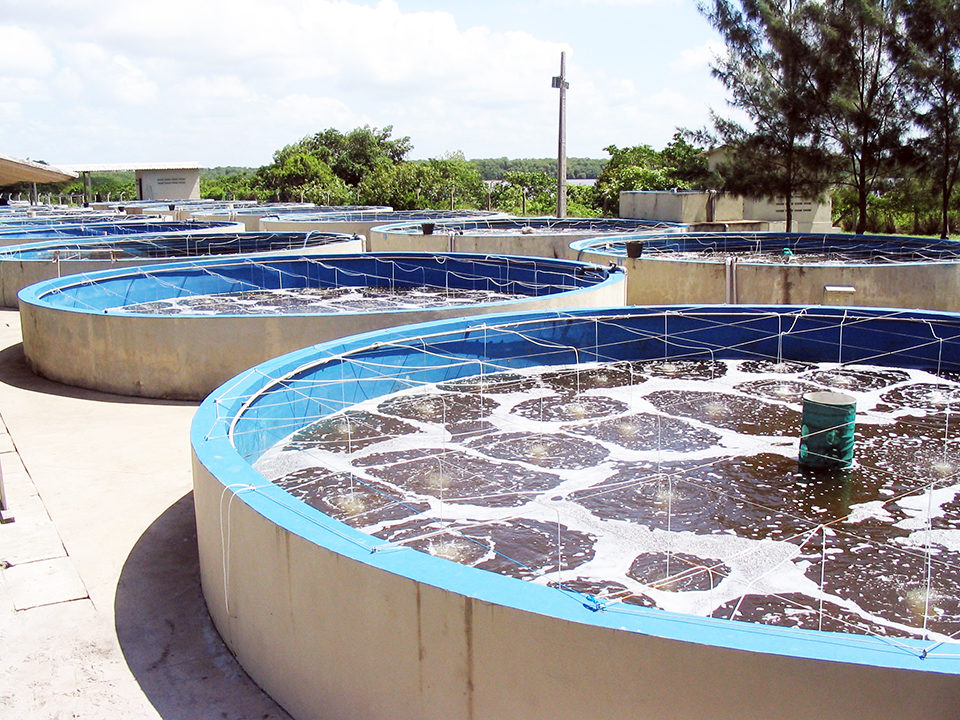
Dissolved-oxygen monitoring
Frequent dissolved-oxygen measurements should be made in aerated ponds to assure that the amount of aeration is sufficient to avoid undesirably low concentrations. Automatic systems can be used to turn aerators on and off in response to upper and lower dissolved-oxygen concentration set points. A secondary benefit of aerator controllers is that dissolved-oxygen concentrations can be recorded over time.
Research has demonstrated that considerable energy can be saved by using aerator automation systems. The cost of these controllers has declined, and reliability has increased in recent years. In the United States, a large number of catfish farmers have adopted aerator automation.
(Editor’s Note: This article was originally published in the July/August 2014 print edition of the Global Aquaculture Advocate.)
Author
-

Claude E. Boyd, Ph.D.
School of Fisheries, Aquaculture
and Aquatic Sciences
Auburn University
Auburn, Alabama 36830 USA[117,100,101,46,110,114,117,98,117,97,64,49,101,99,100,121,111,98]
Tagged With
Related Posts

Responsibility
A look at various intensive shrimp farming systems in Asia
The impact of diseases led some Asian shrimp farming countries to develop biofloc and recirculation aquaculture system (RAS) production technologies. Treating incoming water for culture operations and wastewater treatment are biosecurity measures for disease prevention and control.
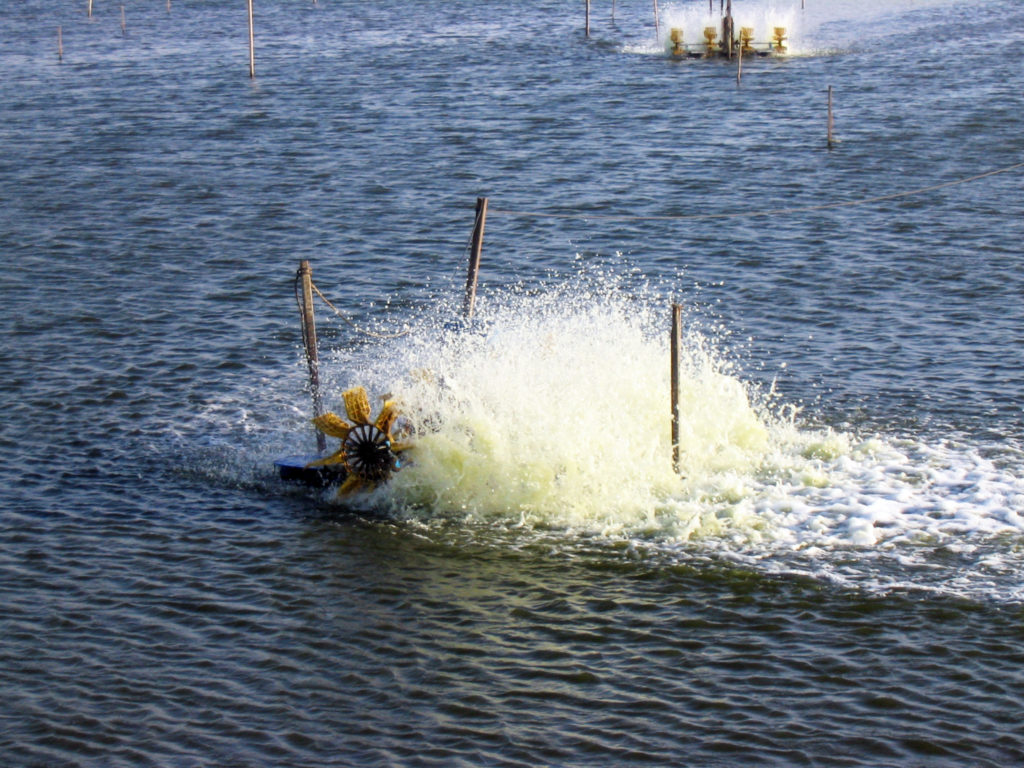
Responsibility
Pond aeration and aerators: Second thoughts
Aerators, especially paddlewheels, are often used to mix the water and address oxygen stratification in ponds. However, most aerators do not provide the most efficient and power-conscious service. Due to thermal and oxygen stratification in ponds, the efficiency of paddlewheel aerators is low, and other present-day aerators have other problems. Emerging designs should better address effective mixing and aerating of pond water.
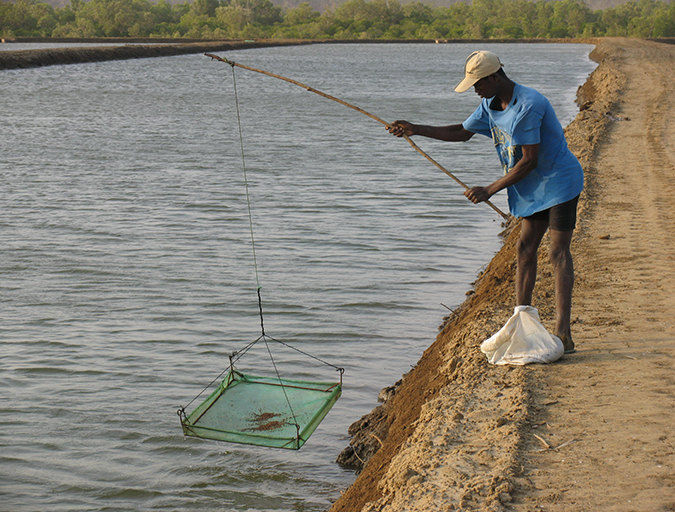
Health & Welfare
Decomposition and accumulation of organic matter in ponds
Aquaculture ponds accumulate organic matter from organic fertilizer, remains of microorganisms produced within the pond, feces of the culture animals and uneaten feed. Claude E. Boyd, Ph.D., details the leading organic matter management practices, and says that the accumulation of organic matter is often not as great as believed.
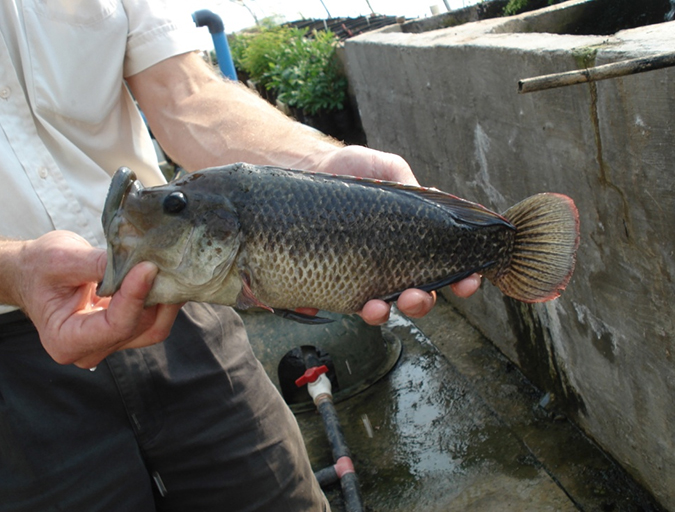
Aquafeeds
Biofloc systems viable for tilapia production
Well-designed and managed biofloc technology systems are a viable alternative for production of various species like tilapia, to increase feed efficiency by lowering aquafeed protein requirements and to help reduce or eliminate effluent discharges.

